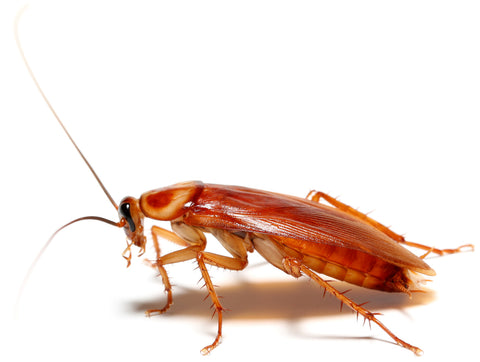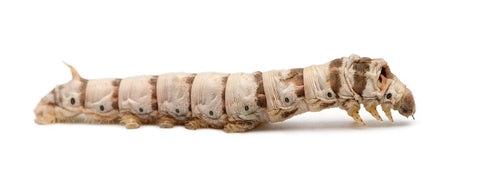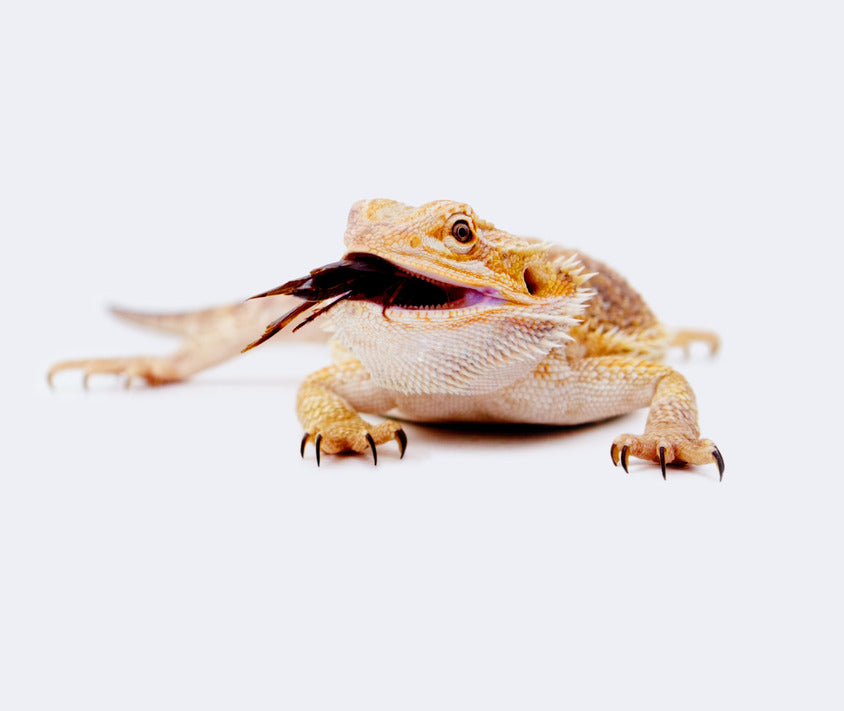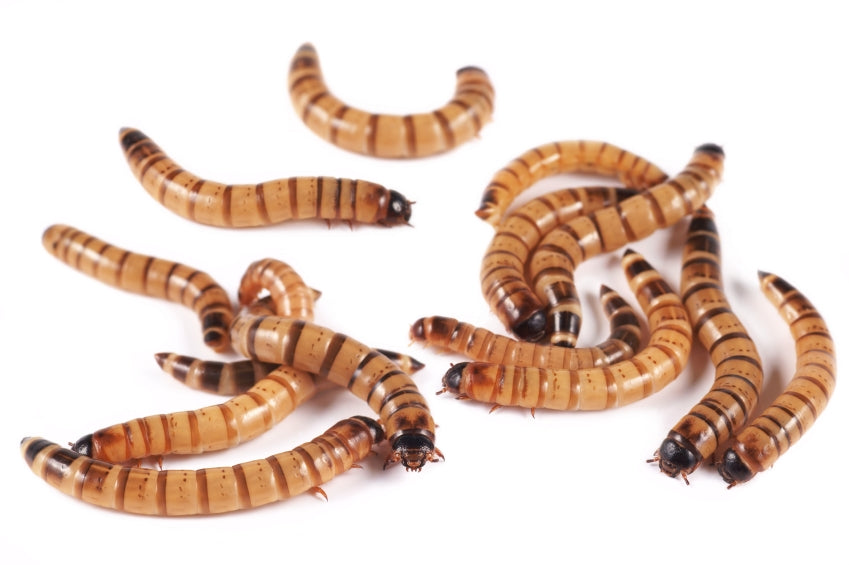What is a "staple" feeder insect?
If you've been in the reptile hobby for any length of time and you have an insectivore or omnivore as a pet, then you've probably run across this term. "Staple" feeders are insects that are nutritious enough to make a frequent appearance in your reptile's diet without making your reptile prone to excessive weight gain, organ disease, or other illnesses. They also need to have a reasonable calcium to phosphorus ratio and must be readily available for reptile owners to purchase on a regular basis.
An older definition of "staple feeder" is an insect that could be exclusively fed to a reptile without obvious negative effects. This definition is outdated because we now know that offering only one type of feeder insect — regardless of how nutritious it may seem — can cause dangerous nutrient deficiencies and/or buildup.
The key to balanced nutrition in almost any pet reptile is variety. They generally eat a very varied diet in the wild, and their bodies have evolved to thrive on this kind of variety. Different foods have different kinds and quantities of nutrients, and the best way to get enough of all of them is to provide as many different (but still appropriate) foods for your pet as possible.
Plus, providing a variety of different foods for your reptile can also help prevent boredom and keep your reptile engaged in mealtime. How would you feel if you had the same food to eat every day for the rest of your life?
You get the idea. Here is a list of the best staple feeder insects that you can use to create a healthy, varied diet for your pet bearded dragon, leopard gecko, etc.
Black Soldier Fly Larvae

Also known as "NutriGrubs," Hermetia illucens is a "staple" feeder insect that has come to challenge crickets' status as favorite. They're easy to store, low-maintenance, and nutritionally well-balanced (although a bit high in the fat department). However, black soldier fly larvae are best known for their high calcium content — they contain so much calcium that dusting is unnecessary!
If you have a reptile that likes to eat flying insects, such as a chameleon, you can let the larvae turn into black soldier flies. The flies have similar nutrition to the larvae, and will be relished as a challenging snack.
Black Soldier Fly Larvae Nutrition:
- Moisture — 61%
- Protein — 18%
- Fat — 14%
- Ash — 4%
- Fiber — 3%
- Calcium:Phosphorus ratio — 2.6:1
Crickets

Acheta domesticus has been a popular staple feeder insect for years, and rightly so — they offer a good amount of protein, are low in fat, and are plentiful in amino acids. They are a little low in the calcium department, but that's nothing a good calcium-rich gutload can't fix. Plus, their "skittery" way of moving effectively engages almost any reptile's hunting instincts.
There are some rumors that crickets are riddled with parasites and nutritionally void, but these rumors are just that: rumors.
Cricket Nutrition:
- Moisture — 77%
- Protein — 15%
- Fat — 3%
- Ash — 1%
- Fiber — 2%
- Calcium:Phosphorus ratio — 1:9
Discoid Roaches
In some parts of the U.S. (ex: Florida), getting feeder roaches can be difficult because most species are illegal. Blaberus discoidalis is one of the few exceptions. They are very similar to the more popular dubia roaches in nutritional value, making them a great alternative.
Discoid Roach Nutrition:
- Moisture — 66%
- Protein — 17%
- Fat — 8%
- Ash — 1%
- Fiber — 3%
- Calcium:Phosphorus ratio — 1:3
Dubia Roaches

Blaptica dubia is rapidly replacing crickets as the preferred "staple" feeder insect in the reptile community. They're nutritionally well-balanced, come in a variety of sizes, and are easy to gut-load. As one of their most significant benefits, dubia roaches are hardy and have relatively long lifespans, making them a good investment as a live feeder.
Dubia Roach Nutrition:
- Moisture — 66%
- Protein — 23%
- Fat — 7%
- Ash — 1%
- Fiber — 3%
- Calcium:Phosphorus ratio — 1:3
Hornworms

Hornworms are the caterpillars of the Manduca sexta hawk moth. They already have a strong reputation as a popular treat feeder, but here's a secret: they can actually be used as staple feeders! They're easy to care for, easy to digest, packed with vitamins and minerals, and low in fat, making them a natural choice.
If you have a reptile that likes to eat flying insects, such as a larger chameleon, you can let a hornworm or few turn into a moth. Like black soldier flies, the moths have similar nutrition to the caterpillars, and make an exciting change to routine.
Hornworms are known to cause loose or runny stool if fed too often, so they're definitely not a good idea to use as an exclusive feeder. They also tend to be pricier than other options, further making them more practical as part of a rotation. However, they're a great way to help re-hydrate a dehydrated reptile or tempt a reluctant feeder to eat.
Hornworm Nutrition:
- Moisture — 85%
- Protein — 9%
- Fat — 3%
- Calcium:Phosphorus ratio — 1:3
Red Runner Roaches

Like crickets, Blatta lateralis is commonly thought of as a household pest. However, they make great feeders for small to mid-sized insectivores with a rich amino acid profile and well balanced nutrition.
True to their name, red runners are fast movers, making them a great alternative to crickets for reptile keepers who need something that moves like a cricket, but lives longer and isn't noisy.
Red Runner Nutrition:
- Moisture — 74%
- Protein — 17%
- Fat — 5%
- Ash — 2%
- Fiber — 2%
Silkworms

Silkworms are the caterpillars of the Bombyx mori moth. Although best known for their ability to create silk fiber, silkworms and silkworm pupae are popular and nutritious feeder insects for reptiles. They are nutritionally well balanced, easy to digest, have a great calcium to phosphorus ratio, and can be an especially good choice for dehydrated reptiles. When cared for properly, they can last for about a month before dying or turning into moths.
Silkworms are more expensive and less common than other staple feeder insects on this list. However, more people are breeding them as demand for them continues to rise.
Silkworm Nutrition:
- Moisture — 79%
- Protein — 13%
- Fat — 2%
- Ash — 1%
- Fiber — 3%
- Calcium:Phosphorus ratio — 1:2
What does a good insect feeding schedule look like?
First, you need to know how much your pet reptile needs to eat. Due to differences in size, age, activity levels, etc., different reptiles need different quantities of insects in their diet to be healthy. For example, young and growing bearded dragons need fewer insects than adults. Leopard geckos need a proportionately higher amount of insects than bearded dragons, however, because leopard geckos are insectivores and bearded dragons are omnivores.
Once you know how often you need to feed your pet reptile, you can determine a rotation. Generally speaking, you should have at least three staple feeder insects in your rotation, plus the occasional non-staple or treat insect for variety.
Here's an example of what one rotation might look like:
Dubia roaches - 40%
Hornworms - 30%
Black soldier fly larvae - 30%
Dubia roaches are high in protein with a moderate amount of fat and moisture. Hornworms are low in both fat and protein, but high in moisture. Black soldier fly larvae have a moderate amount of protein, fat, and moisture. The three combined help even out each other's extreme points and create a balanced diet.
However, maximum variety is the goal, so if you can manage more different kinds of staple feeders on a regular basis, DO IT!
Don't forget about gut-loading!
A feeder insect is only as good as the food that it eats. If it has access to plenty of water and nutritious, high-calcium food, then it will provide the best possible nutrition for your pet. If it's dehydrated and has a poor-quality diet, then your pet won't get much from eating it. It doesn't matter what you're feeding to your reptile at that point — dubia roaches, crickets, whatever — if it hasn't been well fed, then your reptile won't be well fed either.
Gut-loading is the process of feeding insects to boost their nutritional value. This food should 1) meet the insect's specific nutritional requirements, 2) be nontoxic to reptiles, and 3) boost the insect's nutritional value with additional vitamins, minerals, and calcium.
Some feeder insects, like hornworms, come with all the food they need. Others, like roaches, crickets, and silkworms, have nutritious species-specific diets that you can purchase for them. However, these species-specific diets should still be augmented with fresh vegetables and a source of water.
Reptiles that receive a variety of appropriate, well gut-loaded feeder insects in their diet are more likely to be healthier and live longer than those that do not. Shop our selection of live feeders to find the staple feeder insects that will help your pet reptile thrive!
If you have any questions, please feel free to submit them in the comments below, and we will get back to you as soon as possible.



Leave a comment
All comments are moderated before being published.
This site is protected by hCaptcha and the hCaptcha Privacy Policy and Terms of Service apply.